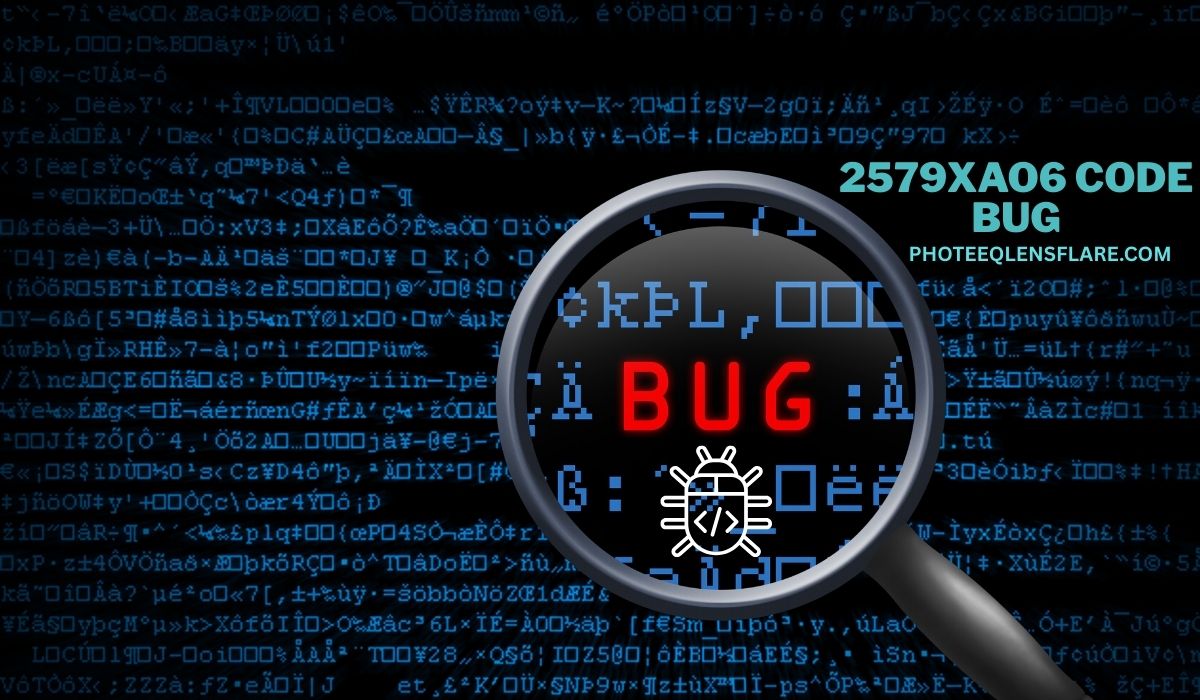Introduction
If you’ve ever stumbled upon the 2579xao6 code bug, you know how frustrating it can be. This unusual error code has been reported by developers, testers, and even end-users across different platforms. While not every system labels it the same way, the 2579xao6 bug generally indicates a conflict between application processes, corrupted scripts, or misaligned dependencies.
Why does this matter? Because if left unresolved, it can cause crashes, slow performance, data inconsistencies, and in some cases, even security vulnerabilities. In this article, we’ll break down the 2579xao6 code bug in detail—covering its causes, symptoms, solutions, and long-term prevention strategies. By the end, you’ll not only understand the bug but also know how to fix it effectively.
What is the 2579xao6 Code Bug?
The 2579xao6 bug is not tied to one specific software environment. Instead, it often appears as a generic runtime error triggered when an application’s execution flow meets unexpected behavior. Developers have noted its occurrence in:
- Web applications (especially during JavaScript and PHP execution).
- API integrations where dependencies conflict.
- Software updates that overwrite previous stable builds.
- Backend systems when handling malformed data.
Think of it as a signal code rather than a descriptive error message—it doesn’t tell you exactly what’s wrong, but it’s a red flag that your program logic or environment needs attention.
Common Causes of the 2579xao6 Code Bug
To solve the issue, you first need to know what’s causing it. Below are the most common triggers:
1. Dependency Conflicts
When two libraries or modules require different versions of the same dependency, the 2579xao6 error may surface.
Example: Installing a new package in Node.js that overrides an older, stable dependency.
2. Corrupted or Incomplete Code Deployment
A common scenario is when part of the deployment is interrupted or corrupted. Missing files or mismatched code fragments can trigger the bug.
3. Data Format Issues
If your application expects a specific data type but receives something else (e.g., expecting JSON but getting XML), the system might throw a 2579xao6 bug.
4. Memory Leaks and Resource Overload
Poor memory handling—especially in long-running scripts—can cause runtime crashes that result in this error code.
5. Security Misconfigurations
Interestingly, the 2579xao6 bug has sometimes been linked to improperly handled authentication tokens, making it a potential security risk.
Symptoms of the 2579xao6 Bug
Not every error shows up the same way. The 2579xao6 code bug can manifest in different forms, such as:
- Application crashes during execution.
- API calls failing without clear explanation.
- High CPU usage with no obvious reason.
- Unexpected log entries containing “2579xao6” as a marker.
- UI freezing or delayed responses in client-facing apps.
Spotting these symptoms early helps prevent larger disruptions.
How to Fix the 2579xao6 Code Bug
Now that we’ve covered causes and symptoms, let’s move into the solutions.
1. Check Dependencies
- Run a dependency audit (
npm audit,pip check, etc.). - Update outdated packages.
- Ensure version compatibility across modules.
2. Rebuild and Redeploy
- Delete temporary build files (
/dist,/build,.cache). - Perform a clean build.
- Redeploy the application to a stable environment.
3. Validate Data Formats
- Use schema validation (e.g., JSON schema).
- Sanitize user input before processing.
- Add error handling for unexpected formats.
4. Optimize Resource Management
- Monitor memory usage with profiling tools.
- Patch memory leaks in long-running services.
- Scale infrastructure if resource demand is genuine.
5. Strengthen Security Configurations
- Double-check API authentication headers.
- Rotate and validate session tokens.
- Apply principle of least privilege to prevent misuse.
Prevention Strategies for the 2579xao6 Bug
Fixing is good, but preventing the bug is even better. Here are proactive steps:
Adopt Automated Testing
- Unit testing ensures small code changes don’t break functionality.
- Integration testing checks dependency handling.
Implement Continuous Monitoring
- Use logging tools like ELK Stack or Datadog.
- Set alerts for abnormal spikes in error logs.
Regular Dependency Maintenance
- Don’t let libraries age without updates.
- Document all dependency versions in a
lockfile.
Security Audits
- Regularly scan for vulnerabilities.
- Run penetration tests to catch overlooked misconfigurations.
Real-World Example: Debugging the 2579xao6 Bug
Let’s say a SaaS platform suddenly experienced system crashes with logs pointing to 2579xao6. After investigation:
- Root cause: A third-party API updated its response format.
- Fix: Developers added a validation layer and upgraded the parsing logic.
- Result: Errors dropped by 95% within hours.
This case highlights how unnoticed dependency changes can trigger 2579xao6.
Conclusion
The 2579xao6 code bug may sound cryptic, but with the right approach, it’s manageable. By understanding its causes, symptoms, and fixes, developers can turn a frustrating runtime error into a learning opportunity. More importantly, prevention through testing, monitoring, and maintenance ensures fewer late-night debugging sessions.
FAQs About the 2579xao6 Code Bug
Q1. What does the 2579xao6 code bug mean?
It’s a generic runtime error indicating dependency conflicts, corrupted deployments, or unexpected system behavior.
Q2. Is the 2579xao6 bug dangerous?
Yes, in some cases. While often a performance issue, it can also expose security risks if tied to authentication or data handling.
Q3. How can I quickly fix the 2579xao6 bug?
Start by clearing caches, validating dependencies, and redeploying. Then check for data mismatches.
Q4. Can beginners solve this bug?
Yes. With basic debugging knowledge—like checking logs, dependencies, and formats—beginners can resolve most cases.
Q5. Does 2579xao6 only occur in web development?
No. It appears in web, mobile, backend, and even desktop applications due to its generic error nature.
Q6. How can teams prevent this bug in production?
By adopting CI/CD pipelines, automated testing, and dependency audits, teams can drastically reduce the risk.
Q7. Why does this error appear after updates?
Updates may overwrite stable configurations or introduce new dependencies, triggering the bug.

